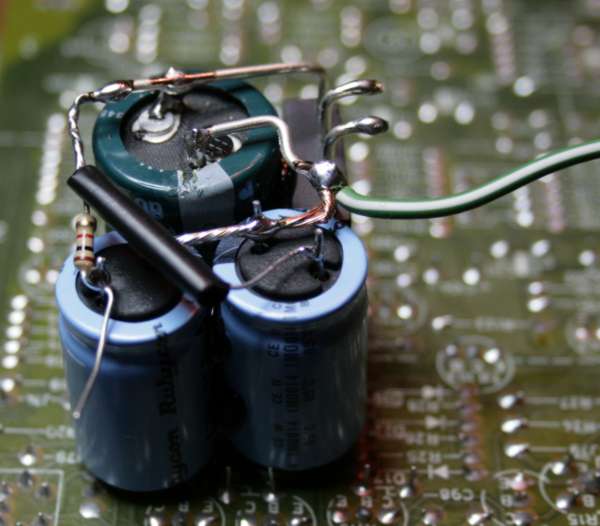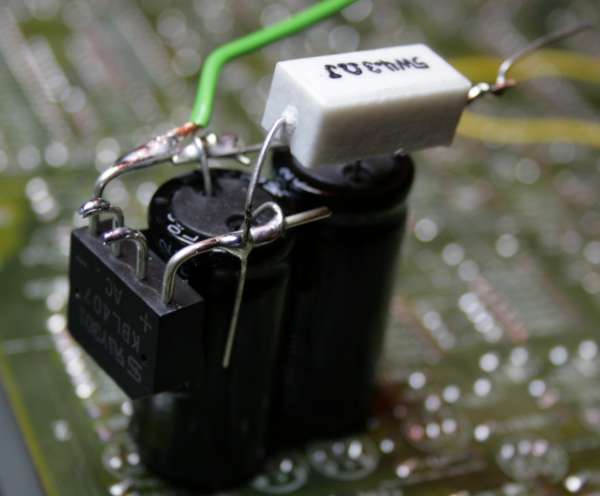
Bang
& Olufsen CD 5500
Frankly, I thought this was
going to be some crap.
I heard B&O on numerous occasions and the whole systems sound like
a kitchen clock. Mainly because of speakers.
But this CD player is a real gem! Despite its ugly lifestyle
connotations of a status toy for noveau riches - this is REAL high end.
Frankly - if this player had a remote and numeric display I would e the
first to keep it as my home player.

It is the second generation CD from B&O. The first was a Japanese
based player, not too good. The second time around, the Danes
took it seriously.
Instead of using off the shelve Philips building blocks, they designed
the 5500 from ground up, almost everything by themselves.
The result is VERY good indeed.
B&O has probably the coolest drawer mechanism I have seen to
date, with
extremely well made and solid sliding rails, and superb pulling motor
arrangement.(a'la tuner dial) Not to mention the ultraslim,
ultracool tray.


TUNER-Like, cotton thread
spinning pulley for drawer.
Electronics and PCB of teh Bang
and Olufsen CD 5500 player
The laser mechanism is a soft-suspended CDM4-11. The electronics is all
B&O made pcb, which is hinged for easy service access (also during
PLAY ! Show me this in a Marantz !)
The DAC is TDA1541A (no crown) which has all power supply, grounding
arrangements
and capacitor decoupling of the first class, almost equal to Grundig
9009 or indeed resembling Revox 226S. or even a NAIM.
The part quality is fantastic, all European, brand-name parts.


Most intriguing is that THERE ARE NO OP-AMPS ! at least not in the
signal.
They use B&O custom designed discrete transistor I/U conversion and
one transistor pair per output channel as analogue stage.
This makes the B&O THE MOST KOSHER cd player of all that I know.
Isn't it something?
It makes it the only discrete output TDA1541 player I know of, except
the much cheaper Grundig 8400 Mk2. and some HDAM marantzes.
Above you can see the famous trio of chips - SAA7210, SAA 7220p/B and
TDA1541A. The NOS mod in this player is as easy as ABC.

Hook-up for stealing of the signal is installed, empty space at the
back right corner is ready for lampizator.
Listening to the "virgin" unit resulted in the best
pre-lampization sound I heard so far for any TDA player. There was not
an itch to do
anything like lampization, just enjoy.
Downsides ? Of course. Plenty.
No possibility of a remote.
No pause button
No numeric display, no time display, etc.
No room for tubes
No search or fast forward function (only SKIP FF)
No BACK function
Difficulty to put normal RCA's, there is the non detachable DIN cable,
worse scenario than in silly Naim.
So this player is not for everybody, it has very strong love it or
loathe it factor.
WAF must be VERY strong - this player is invisible on a rack, it looks
like anti vibration platform.

BIIIG transformer, very very nice, like in best Revox machines.
.
B&O with tubes inside? Why not sez I. So I designed the most
squeezed set-up ever.
I used 6H1P tubes. I cut the TDA output current traces and installed
resistor of 82 Ohm to ground. I took the input from there via two MKP
caps.
The transformer HAD to go outside unfortunately, so did the tube heads.
Overall - an unpleasant and tricky job, especially that the enclosure
is made of really ugly plastic.
The sonic result is on top level. The sound is powerful, spacious and
analogue like. It is on same level as Revox, not as good as Grundig
9009
and about similar to the Marantz 60 and Grundig 9000 after
re-installing of all caps on the SMD pcb.
The only problem is that this CD player has muting transistors in the
output path, and when they are absent (with lampizator in place)
there is a loud pop during CD start-up after drawer closes. This is
after every CD change, not only on power-up. You can either live with
that, or add a relay in series, or do as I did - re-do the cut traces,
remove resistors, and find a point after the
I/U conversion which is free from the pop sound. It will be no longer a
silicone free player, but still very good and op-amp free at least.
In such event, use 6H6P and not 6H1P (too loud).
Two years later - I learned how to apply the mute function inside the
SAA7210 chip (leg 11 floated and connected to leg 23 of saa7220P chip))
so I would re-do the lampization again, and this
time ABSOLUTELY doing the non-oversampling modification. I can imagine
this player will get to the top league immediately.
I would also try to install only one tube in triode mode anode follower
and with stronger amplification - like ECC801S or E88CC or best - 6N2P.
That setup
would squeeze in tight space. I would also use AC filiaments to save
space.

High voltage section - graetz bridge, and three caps.

Low voltage heaters section - bridge and filter caps

Active circuit mounted on the noval sockets


Ready job - not too pretty but acceptable when you look from front side.
















